Singapore navy launches first of six 'motherships' for unmanned combat
The multi-role combat vessel is the largest and most complex warship built to date in Singapore.
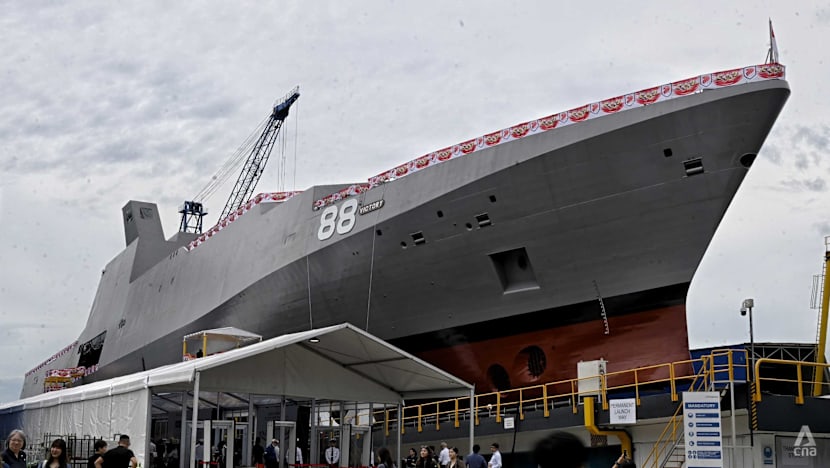
The Republic of Singapore Navy's first multi-role combat vessel during the vessel's launch ceremony on Oct 21, 2025. (Photo: CNA/Wallace Woon)

This audio is generated by an AI tool.
SINGAPORE: The Republic of Singapore Navy (RSN) on Tuesday (Oct 21) launched its first of six multi-role combat vessels (MRCV), marking a milestone in its fleet renewal programme.
The MRCV is designed to function as a "mothership" for unmanned aerial, surface and underwater systems to conduct naval operations, the Ministry of Defence (MINDEF) said in a news release.
"Developed to meet the RSN’s unique operational requirements, it is the largest and most complex warship built to date in Singapore," it added.
The first MRCV, christened Victory, will allow Singapore to better safeguard its sea lines of communication - major maritime routes used for trade, military and naval logistics purposes. Singapore has two vital sea lines of communication: One through the South China Sea, the other through the Strait of Malacca.
The six MRCVs will be progressively delivered from 2028 onwards, replacing missile corvettes which have been in service since 1989. To honour their legacy, the MRCVs will retain the names of the older ships.
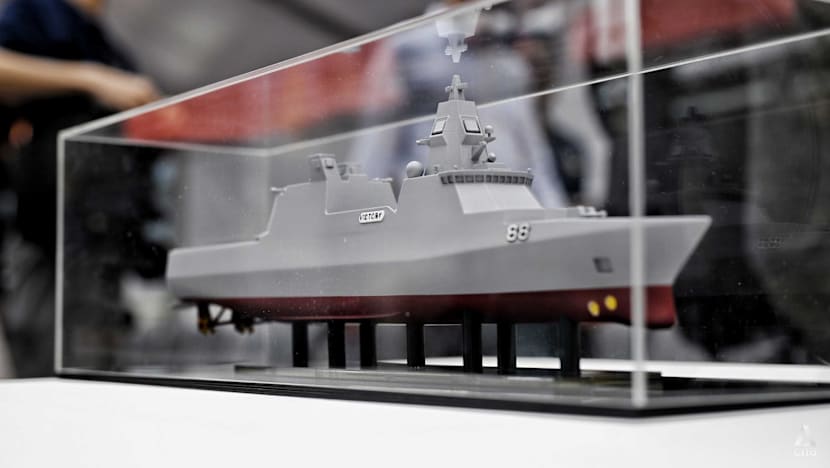
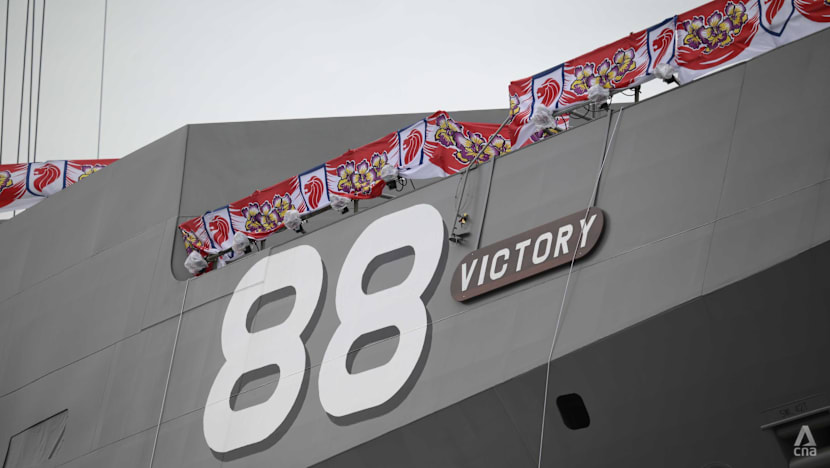
Defence Minister Chan Chun Sing officiated the launch ceremony of the MRCV at ST Engineering's Benoi Shipyard on Tuesday. Following a long-standing naval tradition, the vessel was launched by a lady sponsor, Mr Chan's wife.
The ceremony was also attended by Minister of State for Defence Desmond Choo, Chief of Defence Force Vice Admiral Aaron Beng, Chief of Navy Rear Admiral Sean Wat, and senior defence officials from MINDEF, the Singapore Armed Forces (SAF) and the Defence Science and Technology Agency (DSTA).
Speaking at the ceremony, Mr Chan noted that challenges going forward will be more multi-faceted, more difficult and more dangerous.
"In the past, the role of the navy was perhaps only to defend our near shores," he said. But Singapore's strategic lines of communications extend much further today, and new capabilities are needed to work together as an integrated SAF to secure and defend these.
But equipment alone is not enough; evolution is necessary. "No ship will be able to anticipate … the operational needs for the next 30 years," he said. "What we need is a ship that can keep evolving with our operational requirements."
The MRCV is thus built in a modular fashion to allow the RSN to bring in new capabilities as missions evolve. "This is the new way that we have to operate and to fight in the future," said Mr Chan.
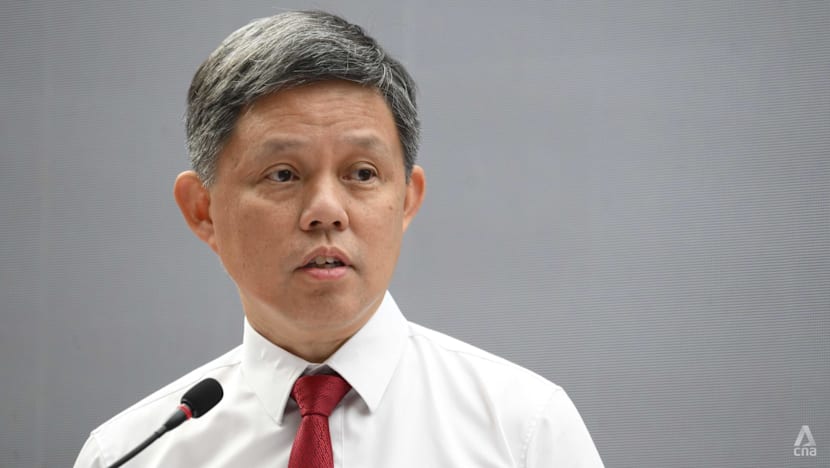
WHAT THE "MOTHERSHIP" CAN DO
In a separate release on Tuesday, ST Engineering said the vessel design was tested and refined virtually, using 3D modelling and digital twinning, before actual construction began. Digital twinning refers to a virtual model of a physical object.
Using such technologies reduced the need for costly physical prototypes, minimised design rework and cut down material waste, said the company. It also shortened the delivery time needed for a vessel optimised to the RSN's needs, it added.
After the launch, MRCV Victory will be transferred to Gul Yard, where it will undergo further outfitting, integration and sea trials, ST Engineering added.
At the same time, a pioneer crew, comprising fewer than 100 people as a baseline, will also begin training to prepare to operationalise the ship in the coming years, said MINDEF.
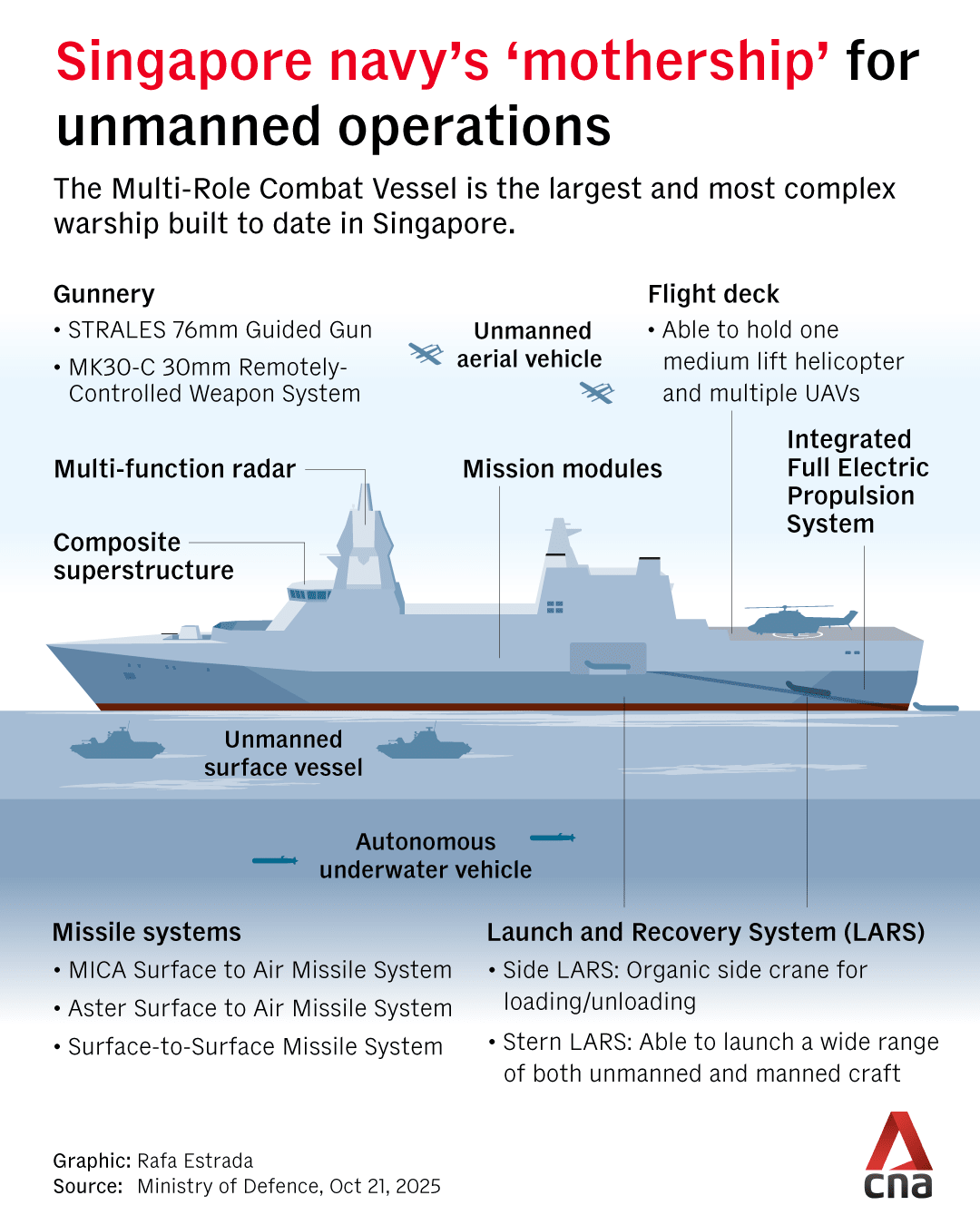
The MRCV weighs 8,000 tonnes and measures 150m in length. It is the result of the navy's studies of unmanned systems and consultations with DSTA and international partners.
It combines the combat capabilities of a modern frigate - a type of warship - with the carriage and control capacity needed to be a mothership for various unmanned systems, said MINDEF.
Its operational range exceeds 7,000 nautical miles – twice that of the Formidable-class frigates, the principal combatants of the RSN – and it has an endurance - the maximum time it can operate without refueling or resupply - of more than 21 days.
It can travel in excess of 22 knots or close to 41kmh.
Unmanned surface vehicles, unmanned aerial vehicles and autonomous underwater vehicles deployed from the MRCV will work together to expand the surveillance and operational reach of the ship.
This allows one MRCV to execute missions which would typically require multiple manned warships, said MINDEF.
The vessel is also equipped with advanced sensors and weapons such as the Strales 76mm guided gun and the ASTER surface-to-air missile system, to conduct high-end warfare and function as a command ship to support SAF missions.
The MRCV additionally features a combat management system developed by DSTA, to integrate the sensor and weapons systems.
"A SMALL CITY"
The MRCV is also designed with advanced automation to operate safely and effectively with a smaller crew compared to other warships of similar size and capability, said MINDEF.
For example, the MRCV’s bridge - or the "cockpit" of ships - can be operated by two crew members instead of five; while the engineering control centre requires just one staffer rather than four to monitor ship systems.
The combat vessel can also hold eight containers in its mission bay, to be reconfigured for a wide range of missions within short periods of time, such as humanitarian assistance and disaster relief.
This increases operational flexibility and reflects "prudence" in defence spending, said Lieutenant-Colonel Auyong Kok Phai, deputy director of the MRCV project.
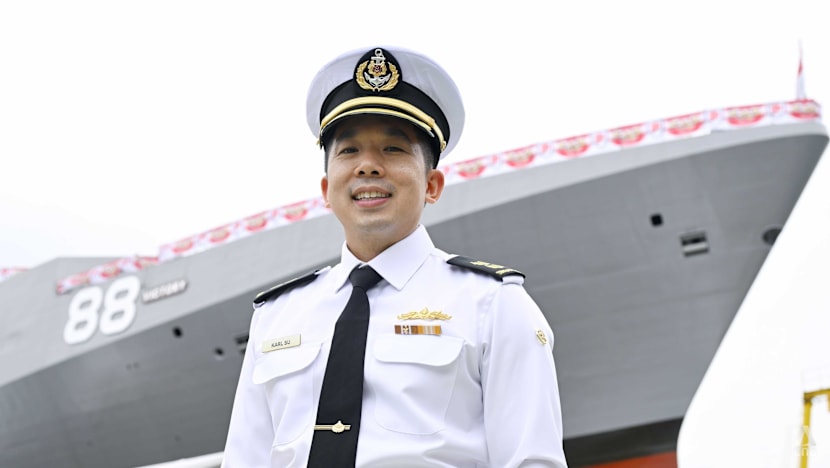
Speaking to reporters after the launch ceremony, LTC Karl Su, commanding officer designate for the MRCV Victory, referred to the ship as being of "game-changing design".
He likened the MRCV to a "small city" with a power plant, a data centre and ample, flexible warehousing space.
LTC Su highlighted the vessel's electric propulsion system - a first for an RSN ship - which he said could generate 30MW of power. "That's enough to power 50,000 plus HDB flats," he said, adding that the power can also be diverted to combat systems.
As CO, his priority will be to ensure his crew takes charge of mastering all the new systems, with sailors of all ranks contributing ideas to innovate in this space.
"There's no playbook for my crew to follow, and we'll be developing this playbook from scratch ... We're really venturing into uncharted waters."














